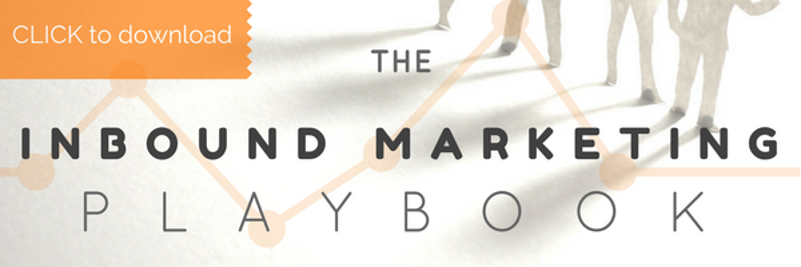
Sometimes making the right move hurts - a lot.
I have three kids. Two are teenage girls, one in high school, and the other starting there next year. The other turns 2 in a few weeks. Thank you for your condolences.
And it's amazing, because I've become my parents in every sense that I said I never would. When the words, "this hurts me more than it hurts you" pass my lips, I die a little inside, because I know they don't understand it, I have to do it anyway, and it really does hurt me more.
They just don't realize it.
I found that it's often the same with my marketing clients when we're not all rowing in the same direction, and I have had let go of a couple of good paying clients because it was better for all of us, even though cutting off those revenue streams hurt - a lot.
But we must...
Awhile back I found a SaaS company that needed help launching their marketing in Hubspot (or I should say that they found me, since that is technically what happened), and since my agency is a Hubspot partner, working almost exclusively in the platform, and we specialize in SaaS marketing (among others), we seemed like a good match.
Launch went well on our end, and we were brought in under a retainer basis to manage pieces of their inbound marketing program, primarily social media, overall inbound strategy and direction to in-house marketers, and the continuous Hubspot/Salesforce and marketing/sales integrations.
It was at this point in time where things started going awry, and here's the case for why and how we responded:
1: Mismatched philosophies
Right out of the gate we were on different pages. Although they had purchased Hubspot, they weren't really thinking about marketing from an inbound perspective. They happened to get access to Hubspot's Pro plan through a program for incubator participants, which meant a significant discount on the first and second year of services. And my agency was hired as an after thought.
This is important, because they were looking for help with a digital marketing delivery tool - not inbound marketing, and there is a distinction.
But I didn't realize that when I first stepped in to help them launch, but they were open to the idea anyway once we were talking retainer. That said, I didn't take them on the usual path of discovery, because I made some incorrect assumptions about their marketing philosophies.
They also ended up hiring somebody to manage ALL aspects of marketing full-time from a big-picture standpoint, and she and I were DEFINITELY on the same page, so all was good... or so I thought. There was plenty of work to go around anyhow.
So, we plugged away with our usual social media strategy, which consisted of curating content on the big 4 (Twitter, Facebook, Google+, and LinkedIn) as well as other unknown social platforms like Quora.
(MORE LIKE THIS: Why you need to be on Quora)
I also helped them identify bottlenecks in the marketing communication, because although we were driving engaged traffic to their website, there were very few mechanisms for conversions, and the ones that were there were very poorly deployed.
Of course, I'm referring to having calls-to-action that lead to related content, so we can capture leads and nurture the ones not ready to buy right away - which was most people in this case, because they're a start-up, and people need to discover and trust them still. I call it "fluid marketing," but really, it's just inbound.
My contact agreed with everything I brought to the table. Unfortunately, the powers that be did not, and the explanations as to why were hard to understand.
For example, they kept blogging through WordPress even though Hubspot's analytics tools are far superior to anything with WP, and we're just wasting them by NOT using HS. Analytics are imperative for marketing. And they are data analyst junkies, so I couldn't understand this decision.
Their response? "We spent a lot of time choosing WordPress for hosting our website because of the blogging capabilities before you joined, so we're going to stick with that."
Okay, totally mismatched marketing philosophies, but we'll work through it.... or least try.
|
For more on inbound vs outbound, try these free resources by Orange Pegs Media: ~ In VS Out ~ Lights Out ~ Brand Development part 1 & part 2 ~ |
2: Revolving doors
As with any start-up, there was high turnover, which meant that we found ourselves starting over again... a lot.
The website went through 2 completely new iterations in less than 3 months, and we had 3 different teams come and go (it wasn't my agency) through the process.
There was also turmoil with sales, because new school was battling old school, and the powers that be based their decisions on historical data that goes back 5 years or more in some cases, making it difficult to make the case for inbound, which is relatively new.
The point is that this was a momentum killer, and every time we felt things were moving in the right direction, they weren't, and we were back to square one.
As an agency, when we work modularly like this, we are at the whims of those actually in charge, and we found ourselves scrapping ideas and starting over before we ever got to see the results - over and over again.
3: Old school won
In the end, old school thinking won, which was a HUGE blow to the inbound team. What does that mean, exactly?
- The client purchased email lists from overseas organizations for spamming
- A website that looks pretty, but lacks the mechanisms necessary for conversions
- Blogs were advertorial
- We were put in compromising positions
Staunch, old school thinking does not mesh with new school. It's that simple. When we were asked to upload and spam a list of 20,000 contacts they just purchased, I found myself in a very compromising position, because we're bordering illegal behaviors, and it's everything we're against. In addition, spamming just doesn't work the way it used to, and it could lead to MAJOR problems where servers are blocking our domain because of all of the spam marks.
That's just bad news.
(MORE LIKE THIS: Stop Cold Calling Me!)
4: The realization & decision
The minute I heard myself telling the client that spamming wasn't good - for legal reasons and the big-picture payout, I knew where we were heading. I had to explain that we were missing out on low-hanging fruit, because even though they were a start-up with a new domain, they had a previous domain that was 301 redirecting 2,000+ visits per month, and were only converting .2% of their visitors into leads.
(What should your visitors-to-leads ratio be? Get the calculator by Orange Pegs)
That is at least 1,000% below where we could have been with the inbound marketing adjustments I was offering.
The problems, remember:
- Mismatched philosophies from day one
- Campaigning for inbound with a revolving door of participants
- Old school was winning, because that's what they were comfortable with
Traffic from social media was up. We even scored a few leads and clients with it over a short period of tiem, which is a few more than any of the spamming did. But we couldn't close the loop on those visitors who were still uncertain but intrigued, and it was apparent that the inbound methodology applied to one or two marketing tactics could not work in an environment that was pre-dominantly outbound.
5: It's not you, it's me
When I tendered our 30-day notice of resignation from the project, I felt like I was George Costanza, explaining that it wasn't them, it was us. They were fine with the arrangement, but I wasn't.
But it was true. We're an inbound marketing agency. Social media is an important part of inbound, but it needs to be rowing in the same direction as the website, content downloads, blogging strategy, SEO, email marketing, and sales.
Now, we could have saved this from a revenue-stream standpoint. There's no doubt in my mind. But that would have meant adopting a program that we know isn't going to provide the path to revenue we are able to provide our other clients, so we wouldn't be able to say with much certainty how we'd help them achieve their revenue targets.
We simply didn't have enough control of the marketing process from day one, and the ship was steered off course the minute it left the port.
We could have kept going.. and cashing our monthly retainer checks... But we didn't, and we bowed out with plenty of notice.
CONCLUSION:
It hurts to cut off revenue streams, but the cost of doing business can be too high when we aren't allowed to operate under our committed business models.
It would have meant rewiring our brains and investing resources into playing ball the outbound way. We would have to have given up on the very core philosophies that drive us to do what we do.
And that's just not good business. At some point, we have to push back and do what's right for everybody, even when it hurts.
Are you interested in seeing how inbound might change the way you think about marketing for your business? Go on... kick the tires with this free ebook from Orange Pegs!



